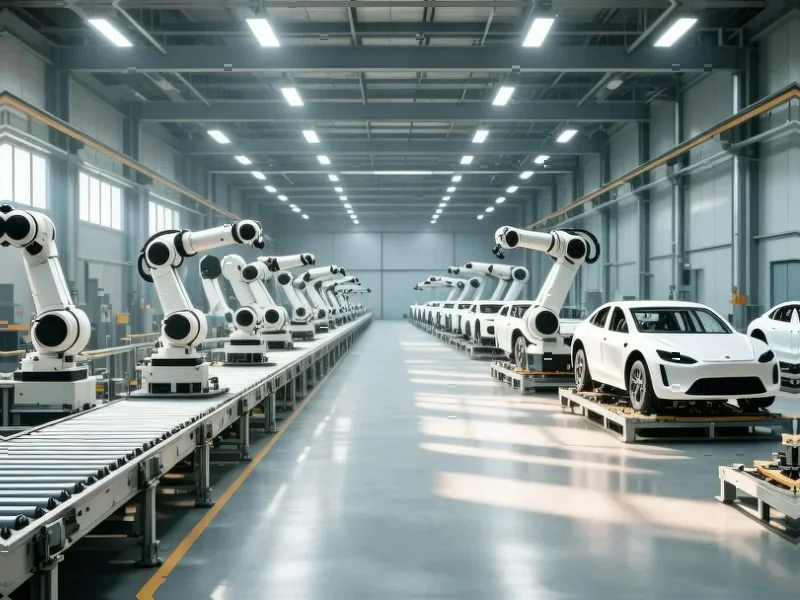According to Manufacturing.net, the latest manufacturing sector developments include both tragedy and innovation across multiple fronts. A devastating October 10, 2025 explosion at an Accurate Energetic Systems plant in Tennessee involved up to 28,000 pounds of explosives, resulting in 16 fatalities and multiple severe injuries. In a positive development, four former employees purchased the shuttered Gunite facility in Illinois, planning to restart operations as Rockford Brake Manufacturing. Meanwhile, Rivian announced workforce reductions affecting approximately 600 employees, representing 4% of its workforce, while Matter Neuroscience developed an unconventional six-pound phone case that originated from taping a phone to a five-pound dumbbell. These developments highlight the diverse challenges and opportunities facing modern manufacturing operations.
Safety Protocols Under Scrutiny
The Tennessee explosion represents one of the most significant industrial accidents in recent years, raising critical questions about explosive material handling protocols. Facilities dealing with energetic materials face unique challenges that standard manufacturing safety frameworks often inadequately address. The scale of this incident—28,000 pounds of detonated material—suggests either catastrophic protocol failure or inadequate risk assessment procedures. This tragedy will likely trigger increased regulatory scrutiny across the explosives manufacturing sector, potentially leading to revised storage limits, enhanced monitoring requirements, and more rigorous employee training standards. Companies handling hazardous materials should anticipate comprehensive safety audits and may need to invest significantly in updated containment systems and emergency response planning.
The Employee Buyout Trend Gains Momentum
The Rockford Brake Manufacturing story represents a growing trend in American manufacturing: employee-led facility rescues. When companies shutter operations, the institutional knowledge and specialized skills often remain with former employees who understand both the technical processes and local market dynamics. This approach offers several advantages over traditional acquisitions—existing workforce relationships, minimal retraining requirements, and preserved supply chain connections. However, these ventures face substantial challenges including securing financing without corporate backing, navigating reactivated regulatory compliance, and rebuilding customer confidence. The success of such initiatives could inspire similar employee-led revivals elsewhere, particularly in regions with concentrated manufacturing expertise but corporate disinvestment.
Unconventional Product Development Pathways
Matter Neuroscience’s six-pound phone case exemplifies how accidental innovation continues to drive product development. What began as an experimental lark demonstrates the value of unconventional thinking in manufacturing design. While the market viability of such a product remains questionable, the development process highlights important principles: testing extreme use cases can reveal unexpected applications, and constraints often spark creative solutions. This approach contrasts sharply with traditional market research-driven product development, suggesting that manufacturers might benefit from allocating resources to experimental projects without immediate commercial potential. The agricultural drone adoption trends mentioned in the related coverage similarly demonstrate how manufacturing innovation often emerges from adapting technologies across sectors.
Strategic Workforce Management in Transition
Rivian’s restructuring reflects broader manufacturing sector challenges in balancing growth ambitions with operational realities. The electric vehicle industry specifically faces unique workforce dynamics—rapid scaling during development phases followed by optimization during production ramps. While 4% reductions may seem modest compared to some industry layoffs, they signal important market adjustments as EV manufacturers transition from prototyping to volume production. These workforce changes coincide with increasing focus on overall equipment effectiveness (OEE) optimization, suggesting manufacturers are prioritizing operational efficiency over expansion in current market conditions. Companies across the sector are likely reevaluating their staffing models to balance specialized expertise with flexible capacity.
Manufacturing’s Divergent Trajectories
The contrasting stories of tragedy, revival, and innovation highlight manufacturing’s complex current landscape. Safety-critical sectors like explosives manufacturing face increasing scrutiny and potential regulatory constraints, while traditional manufacturing sees opportunities for localized revitalization through employee-led initiatives. Meanwhile, technology-driven manufacturing continues experimenting with unconventional approaches that could yield unexpected breakthroughs. This divergence suggests that one-size-fits-all strategies will become increasingly ineffective across the manufacturing spectrum. Companies must develop specialized approaches that address their specific risk profiles, workforce dynamics, and innovation pathways while maintaining flexibility to adapt to rapidly changing market conditions and safety expectations.




